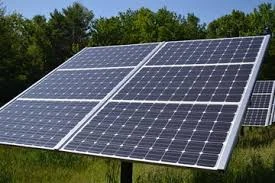Exploring the Benefits and Applications of Flexible Solar Panels in Modern Energy Solutions
Flexible Solar Panels The Future of Renewable Energy
In the quest for sustainable energy solutions, flexible solar panels have emerged as a groundbreaking innovation that promises to revolutionize the way we harness solar energy. Unlike traditional rigid solar panels, flexible solar panels are lightweight, versatile, and highly adaptable, making them suitable for a wide range of applications. This article explores the benefits, applications, and future potential of flexible solar panels.
What are Flexible Solar Panels?
Flexible solar panels are thin, lightweight photovoltaic (PV) devices that can be easily bent or rolled without losing functionality. Made from materials like organic photovoltaics, amorphous silicon, or cadmium telluride, these panels are designed to be flexible enough to conform to various surfaces. Their innovative design allows them to capture solar energy in a more efficient manner compared to conventional panels, particularly in areas with limited space or unique surface shapes.
Advantages of Flexible Solar Panels
1. Lightweight and Portable One of the most significant advantages of flexible solar panels is their lightweight nature. This makes them extremely portable and easy to transport. They can be rolled up and taken to remote locations, making them ideal for outdoor activities like camping, hiking, or traveling in RVs.
2. Versatile Applications Flexible solar panels can be applied to a variety of surfaces, including curved structures, mobile devices, and textiles. This versatility allows for innovative uses, such as solar-powered backpacks, clothing, or even integration into the architecture of buildings.
3. Efficiency in Space Utilization In urban environments where rooftop space is limited, flexible solar panels can be installed on unconventional surfaces like walls, balconies, or even vehicles. This maximizes the potential for solar energy generation in densely populated areas.
4. Easier Installation The lightweight and flexible nature of these panels makes installation simpler and more cost-effective. They can be adhered directly to surfaces without the need for extensive mounting systems, reducing labor and material costs.
5. Durability and Resilience Many flexible solar panels are designed to withstand harsh weather conditions. They are often more resilient against impacts and can maintain performance in extreme temperatures, making them suitable for various climates.
flexible solar panels

Applications of Flexible Solar Panels
Flexible solar panels have a multitude of applications across various sectors
- Consumer Electronics Many portable electronic devices, such as smartphones, tablets, and laptops, can benefit from embedded flexible solar panels, allowing users to charge their devices on the go.
- Transportation Flexible solar panels can be integrated into electric vehicles, trucks, and even airplanes, providing supplementary charging options and increasing energy efficiency.
- Architecture Buildings can incorporate flexible solar panels into façades, roofs, and other surfaces, generating power while maintaining aesthetic appeal.
- Military and Disaster Relief The lightweight and portable nature of flexible solar panels makes them ideal for military operations and disaster relief efforts, where reliable power sources are essential.
The Future of Flexible Solar Panels
As technology continues to advance, the efficiency and affordability of flexible solar panels are expected to improve significantly. Research and development efforts are focused on increasing their energy conversion rates, enhancing durability, and reducing production costs. As these improvements take place, flexible solar panels are likely to become more accessible to consumers and industries alike.
In conclusion, flexible solar panels hold immense potential in the renewable energy landscape. Their lightweight, versatile, and adaptable design opens up a world of possibilities for harnessing solar energy in innovative ways. As the demand for sustainable energy solutions grows, flexible solar panels are poised to play a crucial role in shaping the future of energy generation, paving the way for a greener tomorrow. By embracing this technology, we can take significant strides toward a sustainable, energy-efficient world.
-
String Solar Inverter: The High-Efficiency Solution for Smart Solar EnergyNewsJul.14,2025
-
Revolutionizing Rooftop Energy with the Power of the Micro Solar InverterNewsJul.14,2025
-
Power Independence with Smart Off Grid Solar Inverter SolutionsNewsJul.14,2025
-
On Grid Solar Inverter: Powering the Future with Smart Grid IntegrationNewsJul.14,2025
-
Monocrystalline Solar Panels: High-Efficiency Power for the Future of Clean EnergyNewsJul.14,2025
-
Bifacial Solar Panel: A Smarter Investment for Next-Generation Energy SystemsNewsJul.14,2025







